2-phenylpropionaldehyde
Modify Date: 2025-08-22 13:25:43

2-phenylpropionaldehyde structure
|
Common Name | 2-phenylpropionaldehyde | ||
|---|---|---|---|---|
| CAS Number | 34713-70-7 | Molecular Weight | 134.17500 | |
| Density | 1.002 g/mL at 25 °C(lit.) | Boiling Point | 92-94 °C12 mm Hg(lit.) | |
| Molecular Formula | C9H10O | Melting Point | -60 °C | |
| MSDS | N/A | Flash Point | 169 °F | |
| Name | 2-phenylpropionaldehyde |
|---|---|
| Synonym | More Synonyms |
| Density | 1.002 g/mL at 25 °C(lit.) |
|---|---|
| Boiling Point | 92-94 °C12 mm Hg(lit.) |
| Melting Point | -60 °C |
| Molecular Formula | C9H10O |
| Molecular Weight | 134.17500 |
| Flash Point | 169 °F |
| Exact Mass | 134.07300 |
| PSA | 17.07000 |
| LogP | 1.98900 |
| Index of Refraction | n20/D 1.517(lit.) |
Synonym:alpha-1-Phenylpropionaldehyde; 2-phenyl-1-propano Section 2 - COMPOSITION, INFORMATION ON INGREDIENTS
Risk Phrases: 36/37/38 Section 3 - HAZARDS IDENTIFICATION EMERGENCY OVERVIEW
Irritating to eyes, respiratory system and skin.Air sensitive. Potential Health Effects Eye: May cause eye irritation. Skin: May cause skin irritation. Ingestion: May cause irritation of the digestive tract. Inhalation: May cause respiratory tract irritation. Chronic: No information found. Section 4 - FIRST AID MEASURES Eyes: Flush eyes with plenty of water for at least 15 minutes, occasionally lifting the upper and lower eyelids. Get medical aid immediately. Skin: Get medical aid. Flush skin with plenty of water for at least 15 minutes while removing contaminated clothing and shoes. Wash clothing before reuse. Ingestion: If victim is conscious and alert, give 2-4 cupfuls of milk or water. Never give anything by mouth to an unconscious person. Get medical aid immediately. Inhalation: Remove from exposure and move to fresh air immediately. Notes to Physician: Antidote: None reported. Section 5 - FIRE FIGHTING MEASURES General Information: As in any fire, wear a self-contained breathing apparatus in pressure-demand, MSHA/NIOSH (approved or equivalent), and full protective gear. During a fire, irritating and highly toxic gases may be generated by thermal decomposition or combustion. Use water spray to keep fire-exposed containers cool. Combustible liquid. Containers may explode when heated. Extinguishing Media: In case of fire, use water, dry chemical, chemical foam, or alcohol-resistant foam. Use water spray to cool fire-exposed containers. Section 6 - ACCIDENTAL RELEASE MEASURES General Information: Use proper personal protective equipment as indicated in Section 8. Spills/Leaks: Absorb spill with inert material (e.g. vermiculite, sand or earth), then place in suitable container. Clean up spills immediately, observing precautions in the Protective Equipment section. Remove all sources of ignition. Provide ventilation. Section 7 - HANDLING and STORAGE Handling: Wash thoroughly after handling. Remove contaminated clothing and wash before reuse. Use with adequate ventilation. Avoid contact with eyes, skin, and clothing. Empty containers retain product residue, (liquid and/or vapor), and can be dangerous. Keep container tightly closed. Keep away from heat, sparks and flame. Avoid ingestion and inhalation. Do not pressurize, cut, weld, braze, solder, drill, grind, or expose empty containers to heat, sparks or open flames. Storage: Keep away from heat, sparks, and flame. Keep away from sources of ignition. Store in a tightly closed container. Store in a cool, dry, well-ventilated area away from incompatible substances. Section 8 - EXPOSURE CONTROLS, PERSONAL PROTECTION Engineering Controls: Use adequate ventilation to keep airborne concentrations low. Exposure Limits CAS# 34713-70-7: Personal Protective Equipment Eyes: Wear appropriate protective eyeglasses or chemical safety goggles as described by OSHA's eye and face protection regulations in 29 CFR 1910.133 or European Standard EN166. Skin: Wear appropriate protective gloves to prevent skin exposure. Clothing: Wear appropriate protective clothing to prevent skin exposure. Respirators: Follow the OSHA respirator regulations found in 29 CFR 1910.134 or European Standard EN 149. Use a NIOSH/MSHA or European Standard EN 149 approved respirator if exposure limits are exceeded or if irritation or other symptoms are experienced. Section 9 - PHYSICAL AND CHEMICAL PROPERTIES Physical State: Liquid Color: colorless Odor: None reported. pH: Not available. Vapor Pressure: 13 hPa @ 86 C Viscosity: Not available. Boiling Point: 202.0 - 205.0 deg C Freezing/Melting Point: Not available. Autoignition Temperature: 405 deg C ( 761.00 deg F) Flash Point: 69 deg C ( 156.20 deg F) Explosion Limits, lower: N/A Explosion Limits, upper: N/A Decomposition Temperature: Solubility in water: 3.4 g/l (20 c) Specific Gravity/Density: 1.0090g/cm3 Molecular Formula: C9H10O Molecular Weight: 134.18 Section 10 - STABILITY AND REACTIVITY Chemical Stability: Stable under normal temperatures and pressures. Conditions to Avoid: Incompatible materials, ignition sources, exposure to air, excess heat, strong oxidants. Incompatibilities with Other Materials: Oxidizing agents Hazardous Decomposition Products: Carbon monoxide, irritating and toxic fumes and gases, carbon dioxide. Hazardous Polymerization: Has not been reported. Section 11 - TOXICOLOGICAL INFORMATION RTECS#: CAS# 34713-70-7 unlisted. LD50/LC50: Not available. Oral,Rat:LD50=2800 Carcinogenicity: DL-2-Phenylpropionaldehyde - Not listed by ACGIH, IARC, or NTP. Section 12 - ECOLOGICAL INFORMATION Other No information available. Section 13 - DISPOSAL CONSIDERATIONS Dispose of in a manner consistent with federal, state, and local regulations. Section 14 - TRANSPORT INFORMATION IATA Not regulated as a hazardous material. IMO Not regulated as a hazardous material. RID/ADR Not regulated as a hazardous material. Section 15 - REGULATORY INFORMATION European/International Regulations European Labeling in Accordance with EC Directives Hazard Symbols: XI Risk Phrases: R 36/37/38 Irritating to eyes, respiratory system and skin. Safety Phrases: S 26 In case of contact with eyes, rinse immediately with plenty of water and seek medical advice. S 37/39 Wear suitable gloves and eye/face protection. WGK (Water Danger/Protection) CAS# 34713-70-7: No information available. Canada None of the chemicals in this product are listed on the DSL/NDSL list. CAS# 34713-70-7 is not listed on Canada's Ingredient Disclosure List. US FEDERAL TSCA CAS# 34713-70-7 is not listed on the TSCA inventory. It is for research and development use only. SECTION 16 - ADDITIONAL INFORMATION N/A |
| Hazard Codes | Xi |
|---|---|
| Risk Phrases | R36/37/38 |
| Safety Phrases | S26-S36/37/39 |
| WGK Germany | 3 |
| RTECS | CY1460000 |
| HS Code | 2912299000 |
| Precursor 0 | |
|---|---|
| DownStream 9 | |
| HS Code | 2912299000 |
|---|---|
| Summary | 2912299000. other cyclic aldehydes without other oxygen function. VAT:17.0%. Tax rebate rate:13.0%. . MFN tariff:5.5%. General tariff:30.0% |
| 2-phenylpropionic aldehyde |
| EINECS 202-255-5 |
| HYDRATROPIC ALDEHYDE |
| (S)-2-Phenylpropanal |
| 2-phenyl-propionaldehyde |
| 2-PHENYLPROPANOL |
| (R)-2-Phenylpropanal |
| HYACINTHAL |
| HYDRATROPALDEHYDE |
| 2-PHENYLPROPANAL |
| 2-methylphenylethanal |
| (2S)-2-Phenylpropanal |
| MFCD00006973 |
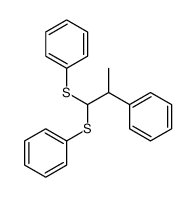 CAS#:110874-41-4
CAS#:110874-41-4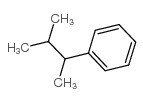 CAS#:4481-30-5
CAS#:4481-30-5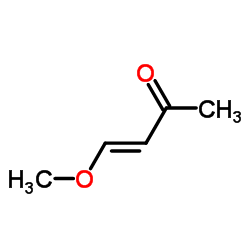 CAS#:4652-27-1
CAS#:4652-27-1 CAS#:51075-23-1
CAS#:51075-23-1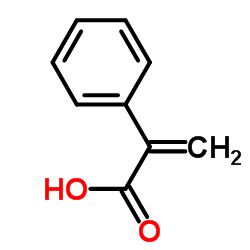 CAS#:492-38-6
CAS#:492-38-6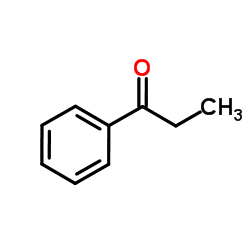 CAS#:93-55-0
CAS#:93-55-0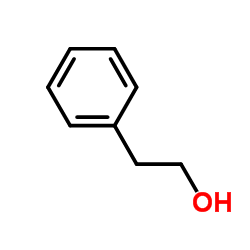 CAS#:98-85-1
CAS#:98-85-1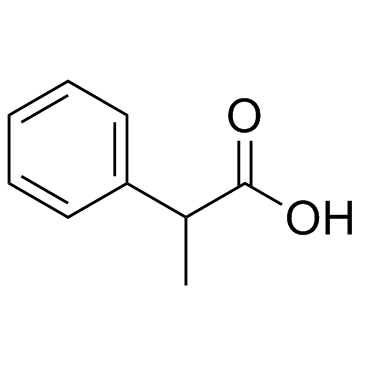 CAS#:492-37-5
CAS#:492-37-5 CAS#:147189-58-0
CAS#:147189-58-0